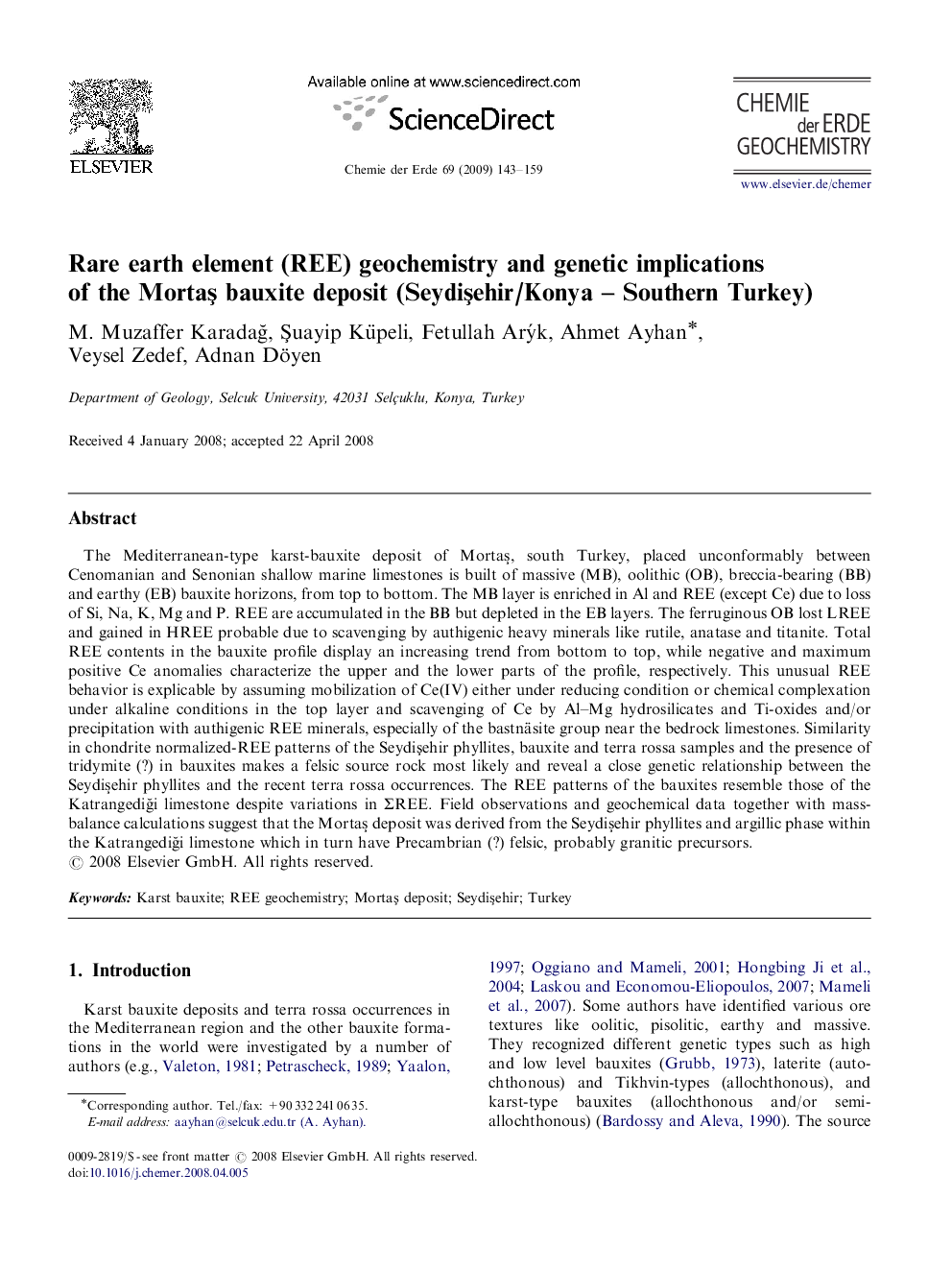| کد مقاله | کد نشریه | سال انتشار | مقاله انگلیسی | نسخه تمام متن |
|---|---|---|---|---|
| 4407163 | 1307352 | 2009 | 17 صفحه PDF | دانلود رایگان |

The Mediterranean-type karst-bauxite deposit of Mortaş, south Turkey, placed unconformably between Cenomanian and Senonian shallow marine limestones is built of massive (MB), oolithic (OB), breccia-bearing (BB) and earthy (EB) bauxite horizons, from top to bottom. The MB layer is enriched in Al and REE (except Ce) due to loss of Si, Na, K, Mg and P. REE are accumulated in the BB but depleted in the EB layers. The ferruginous OB lost LREE and gained in HREE probable due to scavenging by authigenic heavy minerals like rutile, anatase and titanite. Total REE contents in the bauxite profile display an increasing trend from bottom to top, while negative and maximum positive Ce anomalies characterize the upper and the lower parts of the profile, respectively. This unusual REE behavior is explicable by assuming mobilization of Ce(IV) either under reducing condition or chemical complexation under alkaline conditions in the top layer and scavenging of Ce by Al–Mg hydrosilicates and Ti-oxides and/or precipitation with authigenic REE minerals, especially of the bastnäsite group near the bedrock limestones. Similarity in chondrite normalized-REE patterns of the Seydişehir phyllites, bauxite and terra rossa samples and the presence of tridymite (?) in bauxites makes a felsic source rock most likely and reveal a close genetic relationship between the Seydişehir phyllites and the recent terra rossa occurrences. The REE patterns of the bauxites resemble those of the Katrangediği limestone despite variations in ΣREE. Field observations and geochemical data together with mass-balance calculations suggest that the Mortaş deposit was derived from the Seydişehir phyllites and argillic phase within the Katrangediği limestone which in turn have Precambrian (?) felsic, probably granitic precursors.
Journal: Chemie der Erde - Geochemistry - Volume 69, Issue 2, June 2009, Pages 143–159